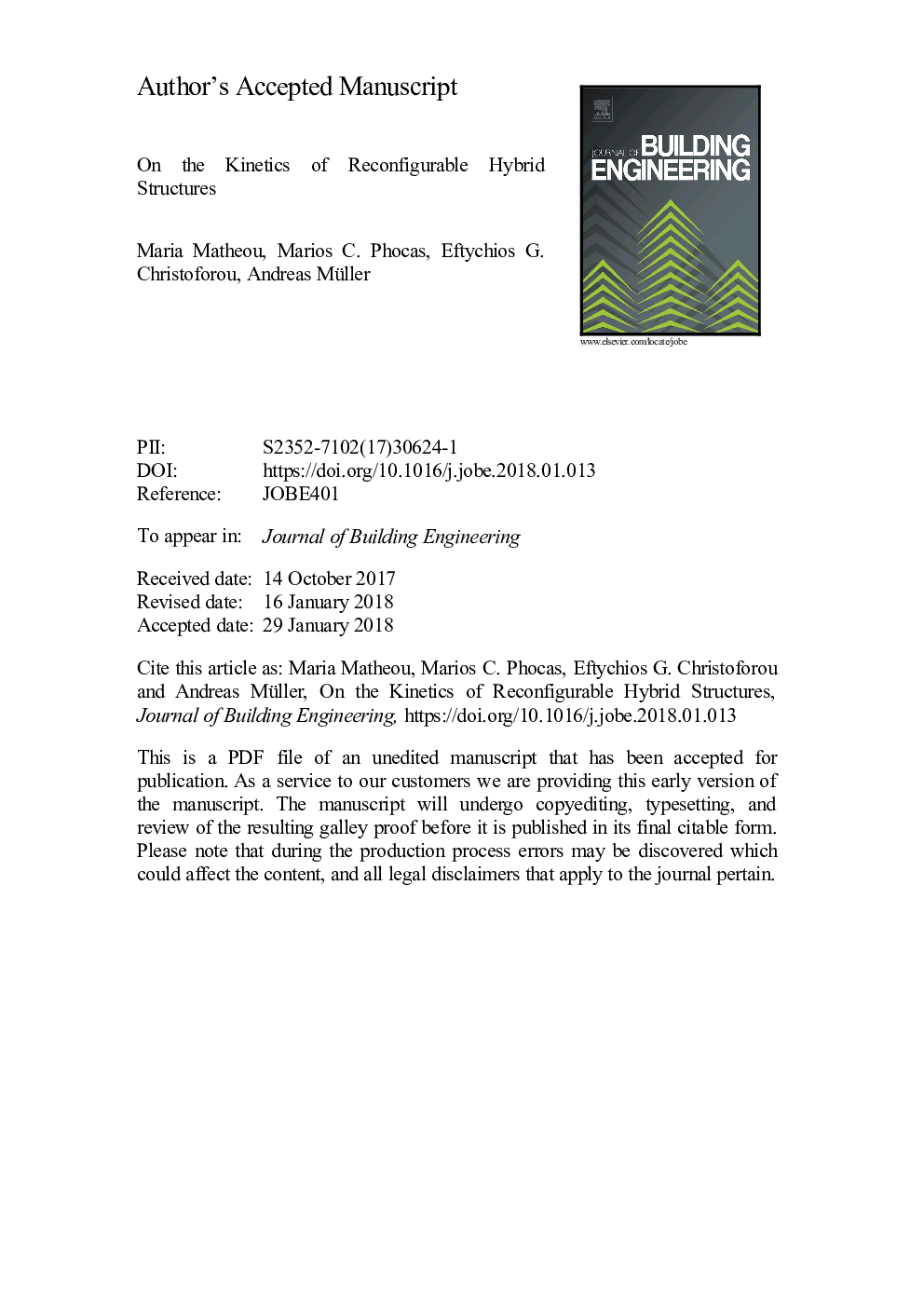| Article ID | Journal | Published Year | Pages | File Type |
|---|---|---|---|---|
| 6749900 | Journal of Building Engineering | 2018 | 16 Pages |
Abstract
The paper refers to a basic reconfigurable structural typology of hinge-connected members forming of an n-bar planar linkage and a secondary system of struts and cables. The system aims at providing both structural stability and transformability. For realizing reconfigurations of the system, the 'effective 4-bar' concept is applied, using a sequence of 1âDOF motion steps that involve selectively locking (nâ¯ââ¯4) joints of the primary members and appropriately tensioning the cables. The control system includes two motion actuators associated with the two cables, which are located at the structural supports, as well as brakes installed on each individual joint. The numerical studies involve three similar arch-like configurations of 8, 9 and 10-bar linkages. Several feasible reconfiguration sequences are considered for the system, in order to change between an initial and a target configuration. The numerical studies provide insight into the characteristics of the hybrid structure and the practical implementation of the reconfiguration approach. The structural concept supports the realization of temporary buildings with adaptive characteristics as to varying external conditions or application requirements.
Keywords
Related Topics
Physical Sciences and Engineering
Engineering
Civil and Structural Engineering
Authors
Maria Matheou, Marios C. Phocas, Eftychios G. Christoforou, Andreas Müller,
